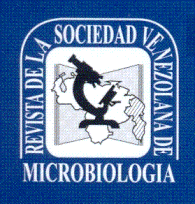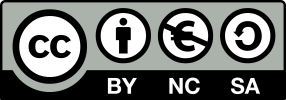Alternativas para el control de hongos postcosecha en naranjas valencia (Citrus sinensis)
Palabras clave:
Trichoderma harzianum, quitosano, bicarbonato de sodio, pudriciones, control natural, chitosane, sodium bicarbonate, rotting, natural controlResumen
La finalidad de este estudio fue conocer la efectividad del hongo Trichoderma harzianum, el quitosano y el bicarbonato de sodio en el control de hongos postcosecha en naranjas valencia. Se utilizaron 120 naranjas valencia, usando 24 naranjas por grupo. Cada uno de estos grupos fue sumergido en uno de los siguientes tratamientos: cultivo del hongo T. harzianum (1x109 esporas/mL.), quitosano (2%), bicarbonato de sodio (1%) y agua común (testigo); las 24 naranjas restantes no recibieron tratamiento y fueron consideradas como grupo control. Las naranjas fueron posteriormente almacenadas en envases de plástico con papel absorbente durante 14 días, a 27ºC, para determinar el crecimiento de hongos u otra alteración. Se desarrollaron 4 especies de hongos en el grupo control: Penicillium digitatum (80%), Penicillium italicum (10%), Colletotrichum gloeosporioides (5%) y Cladosporium herbarum (5%), con diferencias significativas entre hongos (p<0,05). En el testigo, sólo se encontró P. digitatum en un 29,1% y en los tratamientos con quitosano y bicarbonato de sodio sólo se presentaron pudriciones no fúngicas en un 20,8% y 41,6% respectivamente. Las tratadas con T. harzianum no presentaron hongos, ni ninguna alteración en 14 días de tratamiento, existiendo diferencias significativas (p<0,05) en cuanto a la presencia de hongo o alteración por tratamiento. Esto sugiere que es posible controlar hongos postcosecha de las naranjas con el hongo T. harzianum.
Alternatives for postharvest fungi control of valencia oranges (Citrus sinensis)
Abstract: The purpose of this study was to establish the effectiveness of the fungus Trichoderma harzianum, chitosane and sodium bicarbonate for postharvest fungus control of valencia oranges. We used 120 valencia oranges using 24 oranges per group. Each of the groups was immersed in one of the following treatments: T. harzianum cultures (1x109 spores/mL), chitosane (2%), sodium bicarbonate (1%) and running water (witness); the remaining 24 oranges did not receive any treatment, and were considered as the control group. The oranges were later stored in plastic containers with absorbent paper during 14 days at 27oC to determine fungus growth or any other alteration. Four fungi species developed in the control group: Penicillium digitatum (80%), Penicillium italicum (10%), Colletotrichum gloeosporioides (5%) and Cladosporium herbarum (5%) with significant differences among fungi (p<0.05). In the witness group there was only P. digitatum (29.1%), and in the groups treated with chitosane and sodium bicarbonate there was only non-fungal rotting in 20.8% and 41.6%, respectively. The oranges treated with T. harzianum did not present fungi or any other alteration during the 14 treatment days, and there were significant differences (p<0.05) as to presence of fungi or alterations during treatment. This suggests that it is possible to perform a post harvest control of oranges with the T. harzianum fungus.






